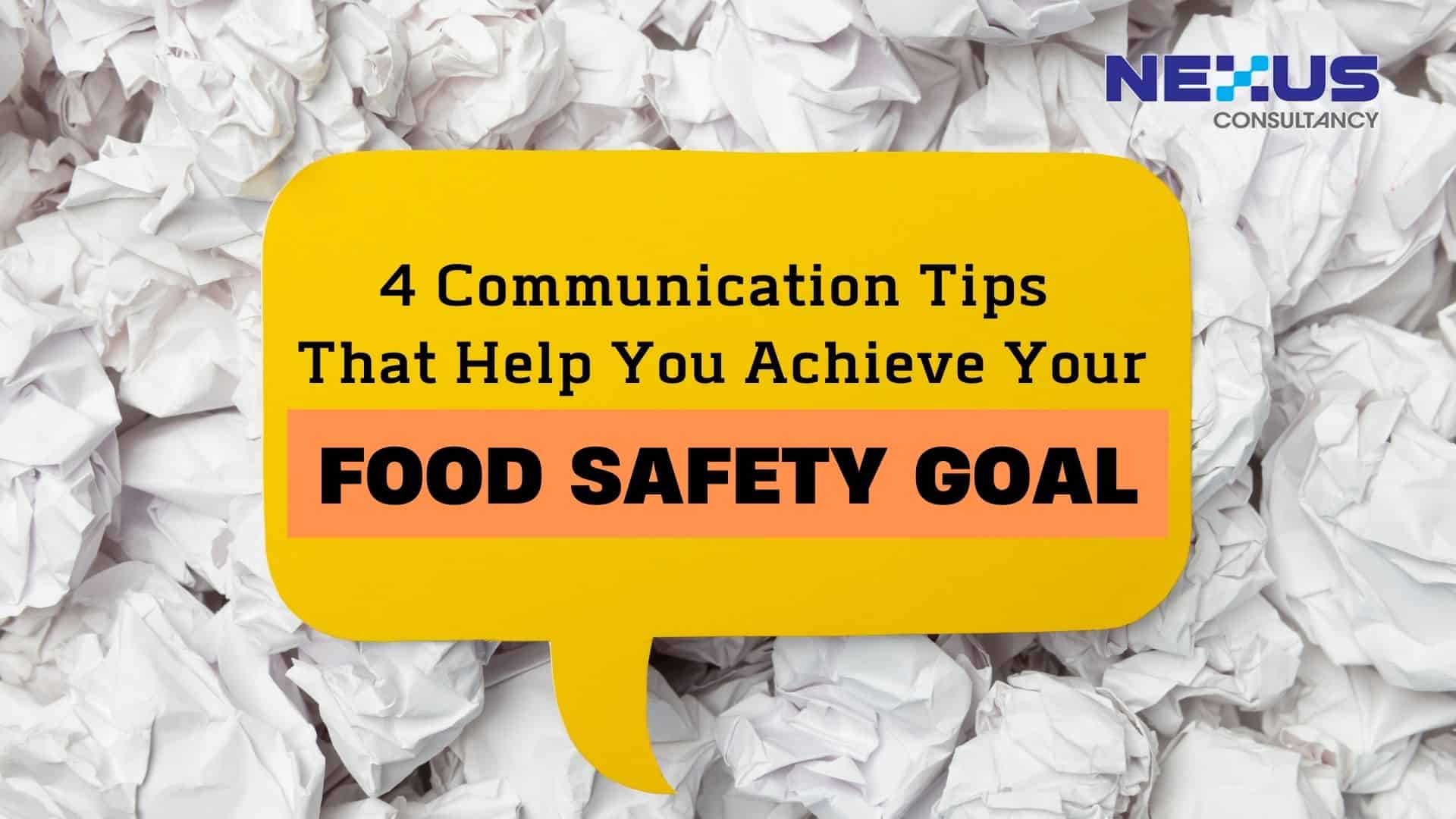
Danielle Tan
Managing Consultant
Leaders in the company must set the tone and support their staff in developing and maintaining the communication.
– 5 mins read

When it comes to communication with your interested parties on food safety, do you feel confident that every message and experience that employee, customers and suppliers have with your company rings true and leaves a positive impression?
The capability to cultivate for an effective communication within your organization will provide you with just this result. Additionally, it will increase the worth of your brand as well as your reputation. And it is necessary for the operation of your company Food Safety Management System.
It’s not a simple task to communicate food safety message to different level of people and parties in order to achieve your food safety goal. However, it can be done with the right effort. To cultivate an effective food safety communication, it requires a combination of four things:

#1. Be Specific and Clear
When communication is not clear, people are confused. Many companies consider “telling people what to do” or “let’s put it up on a notice board” as communication. The question is, is the message clear enough or conveyed in the right manner to provide clarity to the person receive it?
Instead of just putting up the message on a notice board, communication should be regarded as an integrated strategy to provide clarity for food safety performance and growth.
First, leaders shall establish the context for the significance of communications by defining a crystal-clear mission, food safety policy and objectives that align with the company goals.
Next, to provide more clarity in communication, be specific. Food safety messages should be specific and simple enough for an 8-year-old to understand. Use words that everyone understands. When there’s a specific detail involve e.g. deadline, state the specific date instead of using “as soon as possible”. As the receiver of the message, it is our responsibility to ensure we understand the message communicated.

#2. Use the Right Tools
The next step is to make a set of communication tools that help your internal team and their external partners communicate and exchange information in a systematic way. You can do this by using a What/ Who/ Where/ When/ How model, which is explained below.
What
When your messages are more specific and about how to do something, you want to start with the “what.”
What is the basis for your information and can help you make a strong plan for what to do next.
Ask:
- What’s the decision?
- What does it mean?
- What should the person know?
Who
Instead of using general terms like “leaders” or “all employees” to define your stakeholders, think about the breakdown when you communicate. Messages designed for production operators may differ from those for mid-level managers. Avoid department silos and think cross-functionally.
Ask:
- Who is assigned to do the task?
- Who’s in charge?
- Who does it impact?
Where
Like the who, the where demands careful consideration for successful communication. This is especially true for companies that have multiple locations. Use of technology in supporting organization-wide communications should also be considered.
Ask:
- Where is this decision coming from?
- Where/what locations will it affect?
- Where can I get more information?
When
The when can help you set deadlines in a communications plan and cascade your information efficiently. When is sometimes influenced by competing variables; be aware of conflicting goals and ready to “push back” if necessary when unrealistic timetables could weaken your communications efforts.
Ask:
- When is this happening?
How
The how is typically referred to as the “work horse” of the planning team because it directs the planning of the project with its duties and strategies. It is also the location where there should be ample opportunity for ideas to be discussed and even debated.
Ask:
- How was the decision made?
- How will it be implemented?
- How will communications flow internally and externally?
- How does it impact me?

#3. Follow-Up Process
All of us have been there. You share food safety information, advice, or an introduction with your employee, customers or suppliers, but they don’t response.
Conveying messages alone won’t get you the best results on their own. To make sure that each food safety improvement project stays on track, gets off to a good start, and is reviewed at key stages, following up on the work progress after the message is communicated is critical.
Follow-up strategies may include:
- Set clear expectations with the people you communicated with on the tasks they need to complete.
- Follow up on follow ups when necessary until you get a response.

#4. The Right People
Putting together a capable group of people who are enthusiastic about food safety and have the necessary skills in communication is one of the success factors in effective communication.
Start with appointing someone who can lead the team, who has the heart to understand what the company’s food safety commitment is all about, and who can teach and motivate employees.
Recruit fresh players and external partners who have the desire to create communications with new tactics, methods and technologies that align with your company food safety direction and help you reach your goals.
Conclusion
An effective communication strategy in your food safety management system encourages interaction and information flow not only through top management to the workforce, but from the workforce upward. Leaders in the company must set the tone and support their staff in developing and maintaining communication.
More Article
What Is Food Safety Culture and Why It Matters More Than Ever
Chief Operating OfficerLearn why food safety culture is a must-have for compliance, brand trust, and growth—backed by ISO consultants in Malaysia.In today’s competitive and tightly regulated food manufacturing landscape, compliance alone is no longer enough. To...
Why Proactive OSH Legal Compliance Is Good for Business Reputation
Chief Operating OfficerWorried about Malaysia’s OSH Act penalties or workplace audit readiness? Discover how proactive OSH compliance builds trust, reduces fines, and supports ESG goals.In today’s competitive market, companies are judged not just by their products or...
Positioning Your Brand for the Future with Strategic ESG Reporting in Malaysia
Chief Operating OfficerLooking to strengthen trust, investor appeal, and brand leadership in sustainability? Learn how ESG reporting in Malaysia is powering business growth. Start your ESG reporting journey with expert support!In a world where trust and transparency...
Why FSSC 22000 Certification Is Critical for Protecting Your Food Business and Brand in Malaysia
Chief Operating OfficerSecure your food business with FSSC 22000 certification! Enhance safety and compliance. Get expert help—Contact us today! In today's competitive food industry, maintaining food safety and consumer trust is essential. Food manufacturers,...










